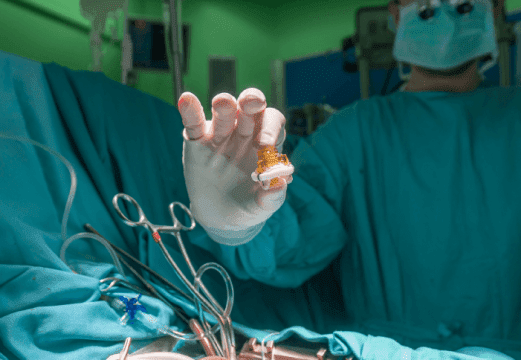Severe tricuspid regurgitation (TR) is an underestimated condition in healthcare systems. However, it is more common than believed, especially in individuals over 65 years of age.

This condition is linked to hospitalizations due to heart failure, mortality rates, and a progressive decline in quality of life.
Surgery to treat TR on its own is complicated, with mortality rates ranging from 6% to 12% and possibly even higher in some analyses.
“Edge-to-edge” treatment is becoming a viable alternative in this scenario.
The Triluminate study is a prospective single-arm trial that included high-surgical-risk patients with moderate or more severe TR. These patients didn’t have a need for treatment on the pulmonary valve or issues on the left side of the heart, but they had severe systolic pulmonary hypertension (>60 mmHg) and their coaptation gap was <10 mm.
The study included 85 patients with an average EuroSCORE score of 8.7%. The average age was 78 years, and 66% of subjects were women. Additionally, 86% had hypertension, 22% had diabetes, 17.6% had experienced a previous heart attack, 92% had atrial fibrillation, and 14% had undergone the implantation of a pacemaker or other cardiac stimulation device, while 46% had renal problems.
Read also: Anti-Lipid Therapy in PCI Patients: Monotherapy with Statins or Combination?
Most cases of TR were secondary, followed by degenerative and mixed cases, in a smaller proportion. The most common TR type was torrential (36.5%), followed by massive (28.2%), severe (29.4%), and moderate TR, which was less frequent. Echocardiographic values included a 52-mm right ventricular end-diastolic diameter, a 1.44 tricuspid annular plane systolic excursion, a 14.4 tricuspid annular area, a 23-mm inferior vena cava diameter, and a 52-mm fractional change in the right ventricle.
After two years of follow-up, the all-cause mortality rate was 16.7%, cardiac mortality was 13.1%, myocardial infarction had occurred in 1.2% of cases, 2.4% of patients had experienced a stroke, 3.6% had new renal insufficiency, and 2.4% experienced new atrial fibrillation.
No patients experienced embolism or endocarditis. There was a significant improvement in functional class, an 84% reduction in heart failure hospitalizations compared with the year before implantation, a 49% decrease in overall hospitalizations, and an improvement in quality of life and in the distance covered during the 6-minute walk test. Furthermore, there was a sustained reduction in TR, along with favorable remodeling of the right ventricle.
Conclusion
In summary, “edge-to-edge” tricuspid repair using the TriClip device proved to be safe and effective, maintaining its efficacy at two years in patients with moderate or more severe TR. The success rate of the repair remained at 75% at the two-year mark.

Dr. Carlos Fava.
Member of the Editorial Board of SOLACI.org.
Original Title: Two-Year Outcomes for Tricuspid Repair With a Transcatheter Edge-to-Edge Valve Repair From the Transatlantic TRILUMINATE Trial.
Reference: Ralph Stephan von Bardeleben, et al. Circ Cardiovasc Interv. 2023;16:e012888. DOI: 10.1161/CIRCINTERVENTIONS.122.012888.
Subscribe to our weekly newsletter
Get the latest scientific articles on interventional cardiology





